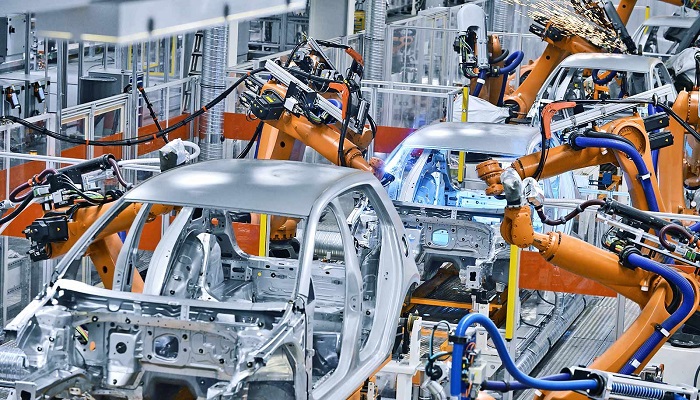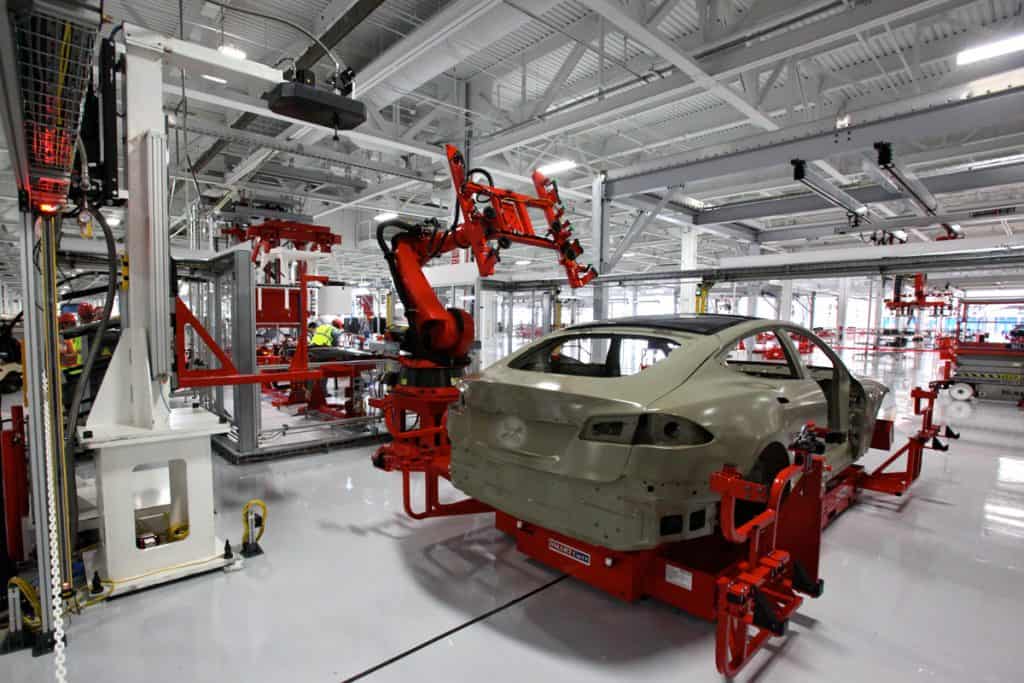Automobile Industry Raw Materials What Drives Innovation

automobile industry raw materials The automobile industry stands as a testament to human ingenuity, continuously evolving through innovative designs, advanced technologies, and sustainable practices. At the core of this dynamic transformation lie the automobile industry raw materials, which serve as the foundation for every vehicle that graces our roads. Understanding the interplay between these materials and innovation provides insights into how the automotive sector adapts to meet the challenges of today and tomorrow.

The Crucial Role of Raw Materials in Automotive Production
Raw materials are the lifeblood of the automotive industry, influencing not just the performance and safety of vehicles but also their environmental impact. Every component, from the engine to the upholstery, relies on specific materials tailored to meet stringent regulations and consumer demands. The quest for innovation within the industry often revolves around how these materials are sourced, processed, and utilized.
Key Raw Materials in the Automotive Sector
The variety of automobile industry raw materials used in vehicle manufacturing is vast. Each material brings its unique properties to the table, contributing to the overall efficiency, safety, and sustainability of the final product.
Steel and Aluminum: The Backbone of Vehicle Structure
Steel has long been the dominant material in automotive construction due to its strength and affordability. It is predominantly used in the chassis, body panels, and various structural components. With advancements in metallurgy, high-strength steel (HSS) has emerged, allowing manufacturers to produce lighter yet stronger components. This reduction in weight directly enhances fuel efficiency and performance.
Aluminum has gained prominence as an alternative to steel, especially in high-performance and luxury vehicles. Its lightweight nature significantly improves fuel economy and allows for enhanced acceleration. The automotive industry has increasingly adopted aluminum in areas such as engine blocks, wheels, and body panels. Combining steel and aluminum in hybrid structures optimizes strength and weight, offering manufacturers innovative design opportunities.
Composites: The Future of Lightweight Materials
Composites represent a new frontier in the automobile industry raw materials landscape. Combining materials such as carbon fiber and polymer resins, composites are exceptionally strong while remaining lightweight. These materials excel in applications where weight reduction is crucial, such as in sports cars and electric vehicles.
The automotive sector is increasingly investing in composite technologies, leading to the development of components like body panels, interior elements, and even structural reinforcements. Their application not only improves performance but also offers opportunities for designers to push the boundaries of aesthetics and functionality.
Innovative Alloys and Advanced Materials
As the automotive industry continues to innovate, the development of new alloys and materials becomes paramount. Advanced alloys, such as magnesium and titanium, are finding their way into vehicle manufacturing. These materials are prized for their high strength-to-weight ratios, making them ideal for applications where weight savings are critical.
Magnesium
Magnesium is one of the lightest structural metals, making it a compelling choice for automotive applications. Its use in engine blocks, transmission cases, and wheels can lead to significant reductions in overall vehicle weight. However, challenges such as susceptibility to corrosion and higher costs compared to aluminum have limited its widespread adoption. Nevertheless, ongoing research aims to address these challenges, paving the way for magnesium’s broader use in future vehicles.
Titanium
Titanium, known for its exceptional strength and corrosion resistance, is another advanced material gaining traction in the automotive world. While its cost remains a barrier, titanium’s application in performance vehicles and high-stress components, such as exhaust systems and suspension parts, demonstrates its potential in enhancing vehicle performance and longevity.
The Push for Sustainability: Recycled Materials
Sustainability has become a pivotal concern for the automotive industry, pushing manufacturers to rethink their sourcing and production processes. One of the most promising avenues for achieving sustainability lies in the use of recycled materials.
The Rise of Recycled Steel and Aluminum
Recycling steel and aluminum significantly reduces the energy and resources required to produce new materials. In fact, recycled aluminum saves up to 95% of the energy needed for primary aluminum production. The automotive industry has embraced this concept, incorporating recycled metals into vehicle manufacturing.
Many manufacturers now utilize recycled steel and aluminum for various components, ensuring that sustainability is woven into the very fabric of their production processes. This commitment to recycling not only minimizes waste but also aligns with the growing consumer demand for environmentally responsible practices.
Biodegradable Materials
The exploration of biodegradable materials is an exciting development in the quest for sustainability. These materials can decompose naturally at the end of their life cycle, reducing the overall environmental impact of vehicles. Research is ongoing in developing biodegradable composites and natural fiber reinforcements that can be integrated into vehicle interiors and body panels.
Technology and Innovation: The Role of Advanced Manufacturing Processes
Innovation in the automobile industry raw materials extends beyond the materials themselves; advanced manufacturing processes play a crucial role in shaping how these materials are utilized. The intersection of technology and materials science has given rise to several trends that drive innovation within the automotive sector.
3D Printing
3D printing technology is revolutionizing the way automotive components are designed and produced. This additive manufacturing process allows for the rapid prototyping of parts, reducing lead times and costs. Manufacturers can experiment with complex geometries and optimize designs for performance without the constraints of traditional manufacturing methods.
3D printing also opens up new possibilities for using advanced materials, including composites and lightweight metals. The ability to produce components on-demand not only streamlines production but also enables customization, offering consumers tailored solutions that enhance their driving experience.
Smart Materials
The automotive industry is increasingly exploring smart materials that respond to environmental changes. These materials can adapt their properties based on temperature, pressure, or even electrical stimuli. For example, shape-memory alloys can return to a predefined shape when heated, offering innovative solutions for adaptive components.
Integrating smart materials into vehicles can enhance safety and performance. Imagine seatbelts that tighten automatically during a collision or exterior panels that adjust for optimal aerodynamics. The potential applications are vast, and the incorporation of such technologies could redefine vehicle design and functionality.
Digital Manufacturing
The digitization of manufacturing processes is another trend reshaping the automotive landscape. Digital twin technology allows manufacturers to create virtual representations of their vehicles, simulating performance and behavior before production. This approach enables engineers to optimize material choices, manufacturing processes, and designs, ultimately leading to better-performing vehicles.
The integration of artificial intelligence (AI) and machine learning into production lines also streamlines operations, reducing waste and improving efficiency. These advancements ensure that the use of automobile industry raw materials aligns with the principles of sustainability and innovation.
The Impact of Global Supply Chains
In the globalized world of automotive manufacturing, supply chains play a significant role in determining the availability and cost of automobile industry raw materials. The dynamics of sourcing materials from different regions can significantly impact production schedules and the overall success of automotive manufacturers.
Sourcing Challenges
The automotive automobile industry raw materials faces challenges related to the sourcing of raw materials, particularly for critical components. Issues such as geopolitical tensions, trade restrictions, and natural disasters can disrupt supply chains and lead to material shortages. As a result, manufacturers must develop resilient strategies to ensure a steady supply of essential materials.
Local Sourcing and Sustainable Practices
In response to these challenges, some manufacturers are turning to local sourcing of automobile industry raw materials. By establishing partnerships with local suppliers, companies can reduce lead times and mitigate the risks associated with global supply chains. This approach not only supports local economies but also aligns with sustainability goals, minimizing transportation emissions and promoting responsible sourcing practices.
Consumer Preferences and Material Choices
As consumer preferences evolve, so too do the demands placed on the automobile industry raw materials. Modern buyers are increasingly conscious of the materials used in their vehicles and the environmental impact of their choices. This shift in mindset is influencing manufacturers to prioritize sustainability and innovation in their material selections.
The Shift Towards Eco-Friendly Materials
Consumers are showing a preference for eco-friendly materials, pushing manufacturers to explore alternatives that minimize environmental impact. This shift has led to increased interest in renewable resources, such as bioplastics derived from plant materials and natural fibers for upholstery.
Additionally, the automotive automobile industry raw materials is witnessing a growing demand for transparency in material sourcing. Consumers want to know where materials come from and how they are produced. As a result, manufacturers are embracing more transparent supply chains, providing information on the sustainability and ethics of their material choices.
Customization and Personalization
In today’s competitive market, customization is becoming a crucial differentiator for automotive brands. Consumers are seeking personalized vehicles that reflect their individual tastes and lifestyles. This trend extends to the materials used in vehicle interiors and exteriors.
Automakers are responding by offering a range of material options, from luxury leathers to sustainable fabrics. By providing consumers with choices that align with their values and preferences, manufacturers can enhance the overall ownership experience while staying true to their commitment to innovation.
The Road Ahead: Future Innovations in Automotive Materials
As the automotive industry navigates the challenges of sustainability, performance, and consumer preferences, the future of automobile industry raw materials looks promising. Innovations on the horizon are poised to transform the way vehicles are designed and produced.
Advanced Recycling Technologies
The development of advanced recycling technologies is set to revolutionize the lifecycle of automotive materials. Closed-loop recycling systems that can reclaim materials from end-of-life vehicles will become increasingly viable. This approach not only reduces waste but also ensures that valuable materials are reused, minimizing the need for virgin resources.
Nanomaterials and Coatings
The advent of nanotechnology presents exciting possibilities for the automotive industry. Nanomaterials can enhance the properties of traditional materials, improving strength, durability, and corrosion resistance. Additionally, advanced coatings can provide self-healing capabilities, protecting vehicles from scratches and damage.
As research into nanotechnology advances, manufacturers may integrate these materials into various components, offering vehicles that are not only more resilient but also require less maintenance over their lifetimes.
Enhanced Performance through Material Science
The field of material science continues to evolve, offering new solutions for enhancing vehicle performance. Researchers are exploring ways to develop materials that can withstand higher temperatures, offer better thermal management, and improve energy efficiency. These innovations will be critical as the automotive automobile industry raw materials shifts towards electric and hybrid vehicles, where thermal management and energy efficiency play a vital role.
automobile industry raw materials
The automobile industry raw materials are at the heart of innovation within the automotive sector. From the fundamental choices of steel and aluminum to the exploration of advanced composites and sustainable materials, the path forward is paved with creativity and a commitment to excellence. As manufacturers embrace new technologies and respond to evolving consumer preferences, the future of the automotive industry promises exciting developments.
By fostering a culture of innovation, prioritizing sustainability, and leveraging advanced materials, the automotive automobile industry raw materials can navigate the challenges of the modern world while continuing to deliver exceptional vehicles that inspire passion and excitement. The journey of transformation continues, driven by the materials that form the very essence of every vehicle on the road.


